Seferturk
Tourism & Travel Agency

Antalya
Antalya is the fifth-most populous city in Turkiye as well as the capital of tourism. Antalya Province located on southwest coast bordered by the Taurus Mountains, Antalya is the largest Turkish city on the Mediterranean coast.
The city that is now Antalya was first settled around 200 BC by the Attalid dynasty of Pergamon, which was soon subdued by the Romans. Roman rule saw Antalya thrive, including the construction of several new monuments, such as Hadrian's Gate, and the proliferation of neighboring cities. The city has changed hands several times, including to the Seljuk Sultanate in 1207 and an expanding Ottoman Empire in 1391.Ottoman rule brought relative peace and stability for the next five hundred years. The city was occupied by Italy for three years in the aftermath of World War I, but was recaptured by a newly independent Turkey in the War of Independence.
Antalya is Turkey's biggest international sea resort, located on the Turkish Riviera.
Popular Places in Antalya
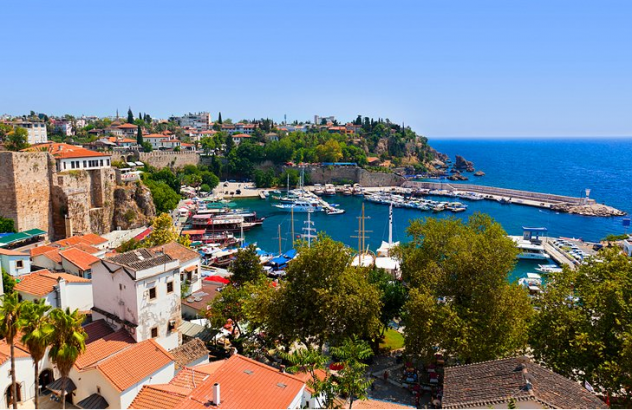
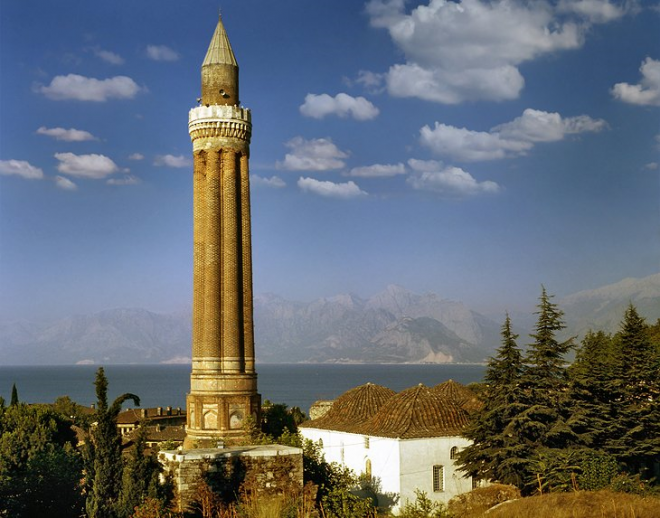
Old Harbor
Nestled into a recess in the cliffs, Antalya's old harbor in the northwest corner of the old town is a picturesque huddle of cafés and restaurants overlooking gently bobbing yachts ready to set out on the Mediterranean.
With its peaceful pleasure-boat atmosphere now, it's difficult to imagine this place was once Antalya's major economic hub, but from the 2nd century up until the mid-20th century, this was the main port, bringing trade and prosperity to the city and surrounding region.
These days, you come here to watch the sun set over the sea while you sip a coffee, or to hop aboard one of the excursion boats for a day tour catered towards soaking up the sun, taking in the lush coastal views, and swimming in the Mediterranean Sea.
Yivli Minare
One of Antalya's most distinctive landmarks, and among the old town quarter's many historic monuments, the Yivli Minare (fluted minaret) was built by the Seljuk sultan Alaeddin Keykubad (1219-36).
The minaret is a typical, and extremely well-preserved, example of Seljuk architecture, with a square base surmounted by an octagonal drum bearing the fluted shaft, with its corbelled gallery around the top.
The attached 14th-century mosque is still in use today.
The minaret is right beside the Kale entrance gate into the old city.
Opposite the minaret is Antalya's Ottoman-era clock tower, while nearby are some tombs dating from the 14th century.
Old Town (Kaleiçi)
The maze-like Kaleiçi neighborhood was made for strolling.
Perfectly restored whitewashed and red-roofed Ottoman mansions line the cobblestone streets, now home to a plethora of boutique hotels, souvenir shops, art galleries, and restaurants.
Although it's more a place to simply breathe in the old-world ambience, there are also plenty of small tourist attractions for those who want to sightsee.
The main square has a fortress gate and stone-clad clock tower while the 18th-century Tekeli Mehmet Paşa Mosque is worth a look just for its intricate interior tile work.
Along Hesapçi Sokak, you'll find the graceful Kesik Minare (truncated minaret). Destroyed by fire in the 19th century, this is all that is left of a building that started its life as a Roman temple, was converted into a Byzantine church, and finally became a mosque.
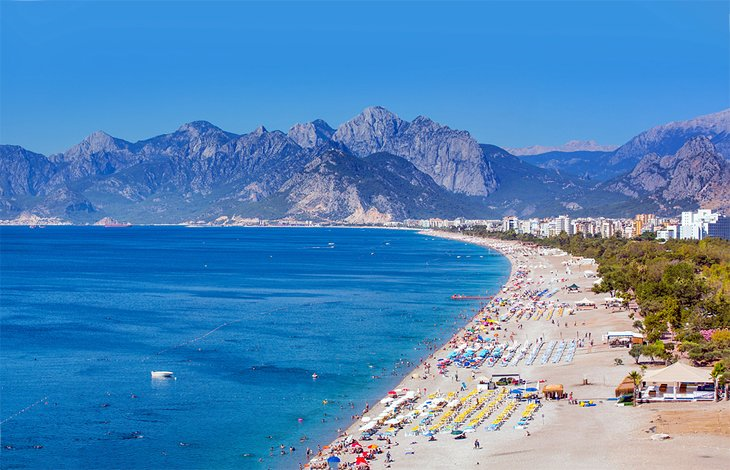
Konyaalti Beach
West of Antalya's town center, Konyaalti Beach is one of Antalya's two prime sweeps of sand, with a picturesque backing of mountains rolling down to the coastline beyond.
During summer, this strip (which is more pebbly than sandy) is hugely popular with both local and foreign visitors, and lazy beach days are made simple with plenty of facilities provided.
Sun loungers with umbrellas can be rented, there are good toilet and shower facilities, and the palm tree lined promenade behind the beach is rimmed with snack shops, cafés, and restaurants for when you get peckish.
The beach is easily accessed from town, so it's a very popular beach option with visitors who've chosen to stay in the atmospheric boutique hotel accommodation in Antalya's old town district, as well as visitors at the beach hotels.
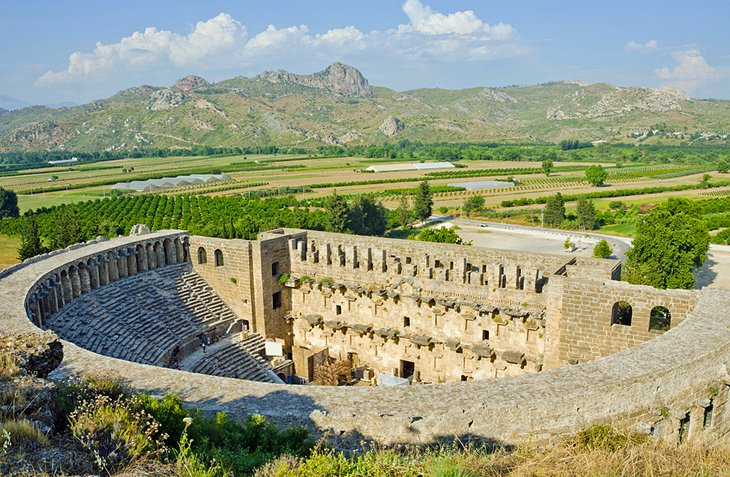
Aspendos
The main reason history buffs visit Antalya is to make the day trip to Aspendos, about 47 kilometers east.
This archaeological site is home to a Roman theater commonly thought to be the best preserved in the world and one of the top tourist attractions in Turkiye. The glory days of this dazzling, ancient town were during the 2nd and 3rd centuries, when most of the ruins that can be seen today were built. Apart from the theater, which has been fully restored and can seat 15,000 people, much of the rest of the site still lies in ruins and is probably only interesting to the most enthusiastic sightseer.
If you're short of time but keen to pack in as many highlights of the Antalya region as you can, the Aspendos, Perge and Manavgat Waterfalls tour allows you to cover three of the most popular attractions all in one day. It includes tours of the Roman ruins of Aspendos and Perge, entrance to Aspendos and the waterfalls (which are near Side), lunch, and pickup and drop-off from your Antalya hotel.
Termessos
Aspendos may get all the tourism fame, but Termessos, 34 kilometers northwest of Antalya, beats it hands down for atmosphere.
Neither the Greeks nor the Romans managed to tame the war-like Pisidians, who fiercely protected their independence from the mountain eyrie of Termessos.
The well-preserved remains of this ancient city lie scattered along a rugged hillside with jaw-dropping views across the surrounding countryside.
Wear sturdy shoes and take plenty of water if you want to fully explore this site.
The colonnaded street and upper agora are particularly impressive but don't miss the theater where the vistas across the peaks of the Taurus Mountains are astounding.
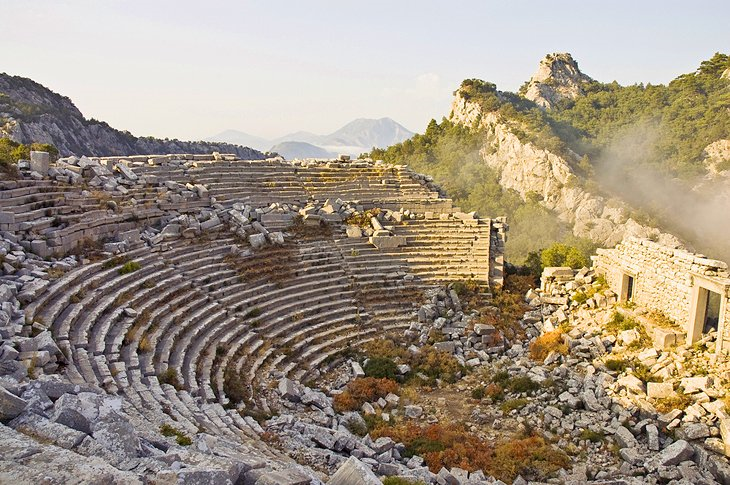
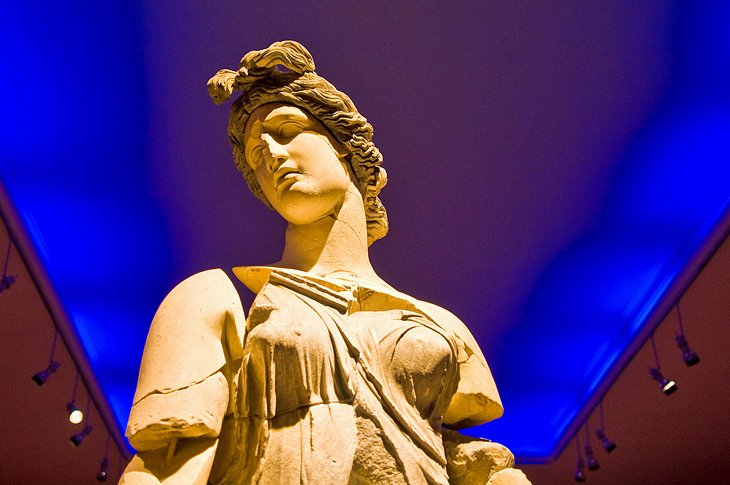
Antalya Museum
If you're at all interested in the Classical-era history of this slice of Turkey's coast, don't miss this excellent museum.
The dazzling exhibits here showcase all the best finds from all the major excavation sites in the surrounding countryside.
Even better, the collection is displayed in exemplary fashion, making the rich (and rather complicated) history of this section of the coast easy to understand.
The large archaeological section offers displays from the Bronze Age to Byzantium, though it's best known for its exhibits of fine statuary created during the Hellenistic and Roman eras of ancient cities such as Perge, Xanthos, and Patara.